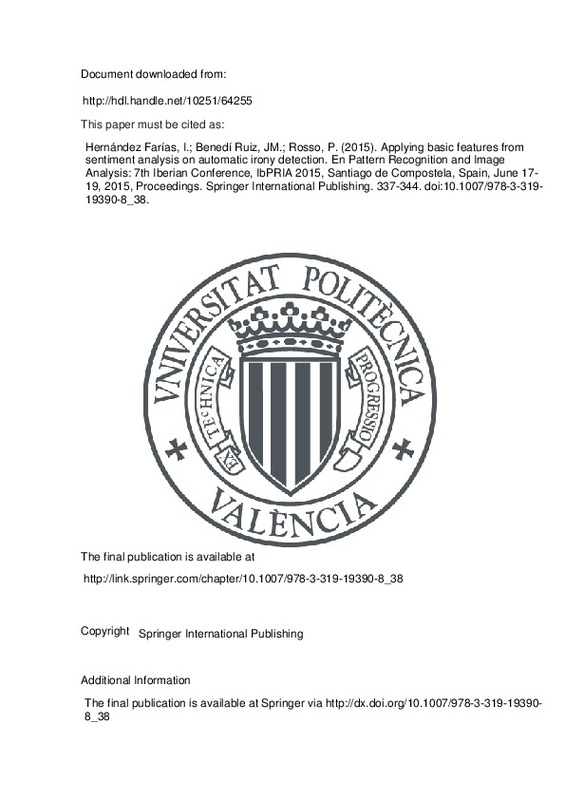JavaScript is disabled for your browser. Some features of this site may not work without it.
Buscar en RiuNet
Listar
Mi cuenta
Estadísticas
Ayuda RiuNet
Admin. UPV
Applying basic features from sentiment analysis on automatic irony detection
Mostrar el registro completo del ítem
Hernández Farías, I.; Benedí Ruiz, JM.; Rosso, P. (2015). Applying basic features from sentiment analysis on automatic irony detection. En Pattern Recognition and Image Analysis: 7th Iberian Conference, IbPRIA 2015, Santiago de Compostela, Spain, June 17-19, 2015, Proceedings. Springer International Publishing. 337-344. https://doi.org/10.1007/978-3-319-19390-8_38
Por favor, use este identificador para citar o enlazar este ítem: http://hdl.handle.net/10251/64255
Ficheros en el ítem
Metadatos del ítem
| Título: | Applying basic features from sentiment analysis on automatic irony detection | |
| Autor: | Hernández Farías, Irazú | |
| Entidad UPV: |
|
|
| Fecha difusión: |
|
|
| Resumen: |
People use social media to express their opinions. Often linguistic devices such as irony are used. From the sentiment analysis perspective such utterances represent a challenge being a polarity reversor (usually from ...[+]
|
|
| Palabras clave: |
|
|
| Derechos de uso: | Reserva de todos los derechos | |
| ISBN: |
|
|
| Fuente: |
|
|
| DOI: |
|
|
| Editorial: |
|
|
| Versión del editor: | http://link.springer.com/chapter/10.1007/978-3-319-19390-8_38 | |
| Serie: |
|
|
| Código del Proyecto: |
|
|
| Descripción: |
|
|
| Agradecimientos: |
The National Council for Science and Technology (CONACyT Mexico) has funded the research work of the first author (Grant No.218109/313683, CVU-369616). The research work of third author was carried out inthe framework of ...[+]
|
|
| Tipo: |
|







![[Cerrado]](/themes/UPV/images/candado.png)


